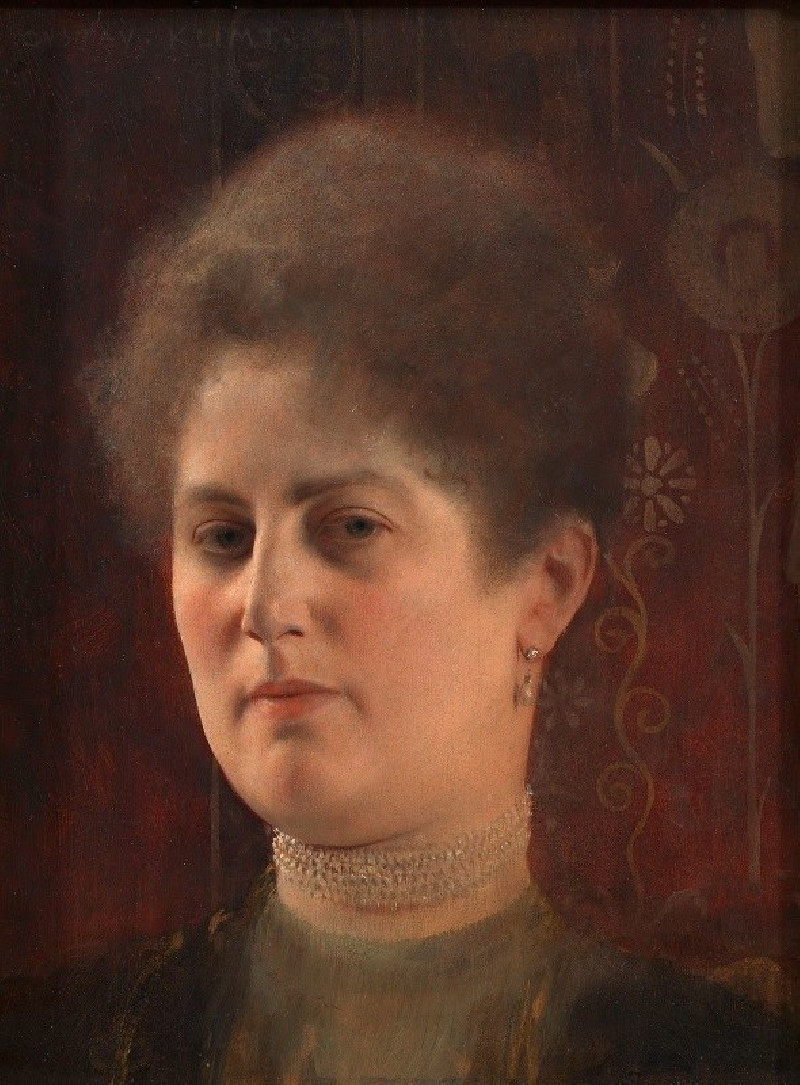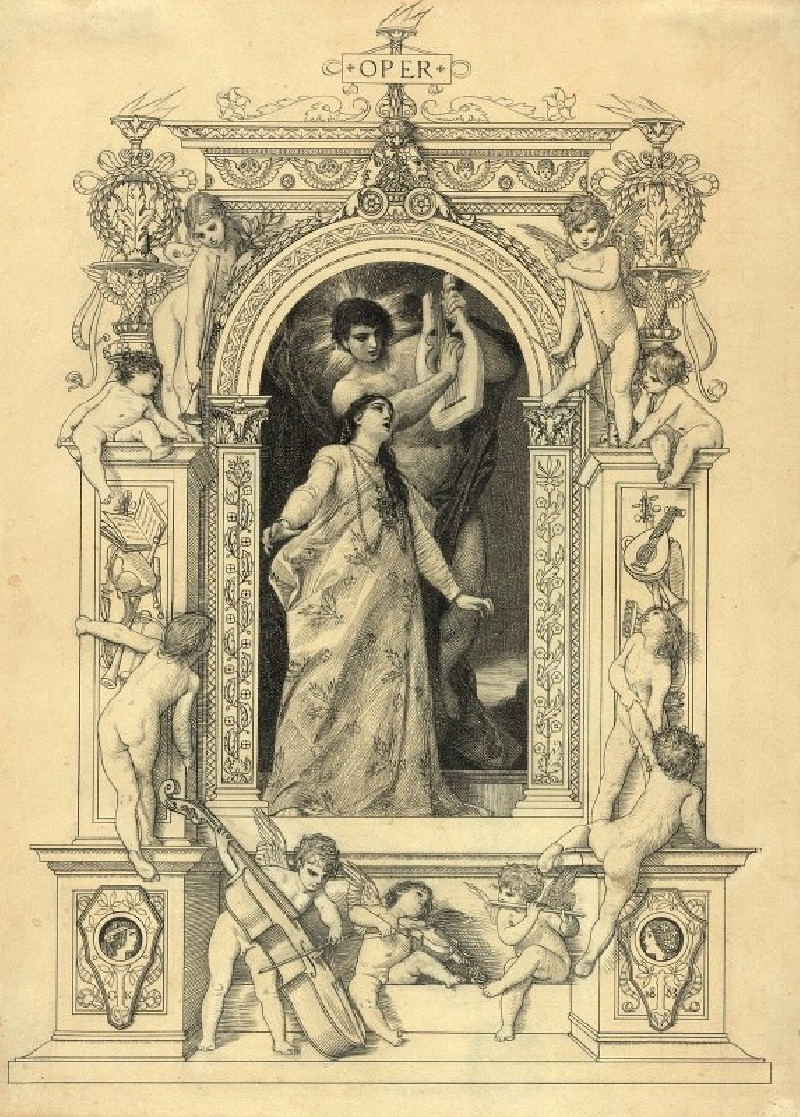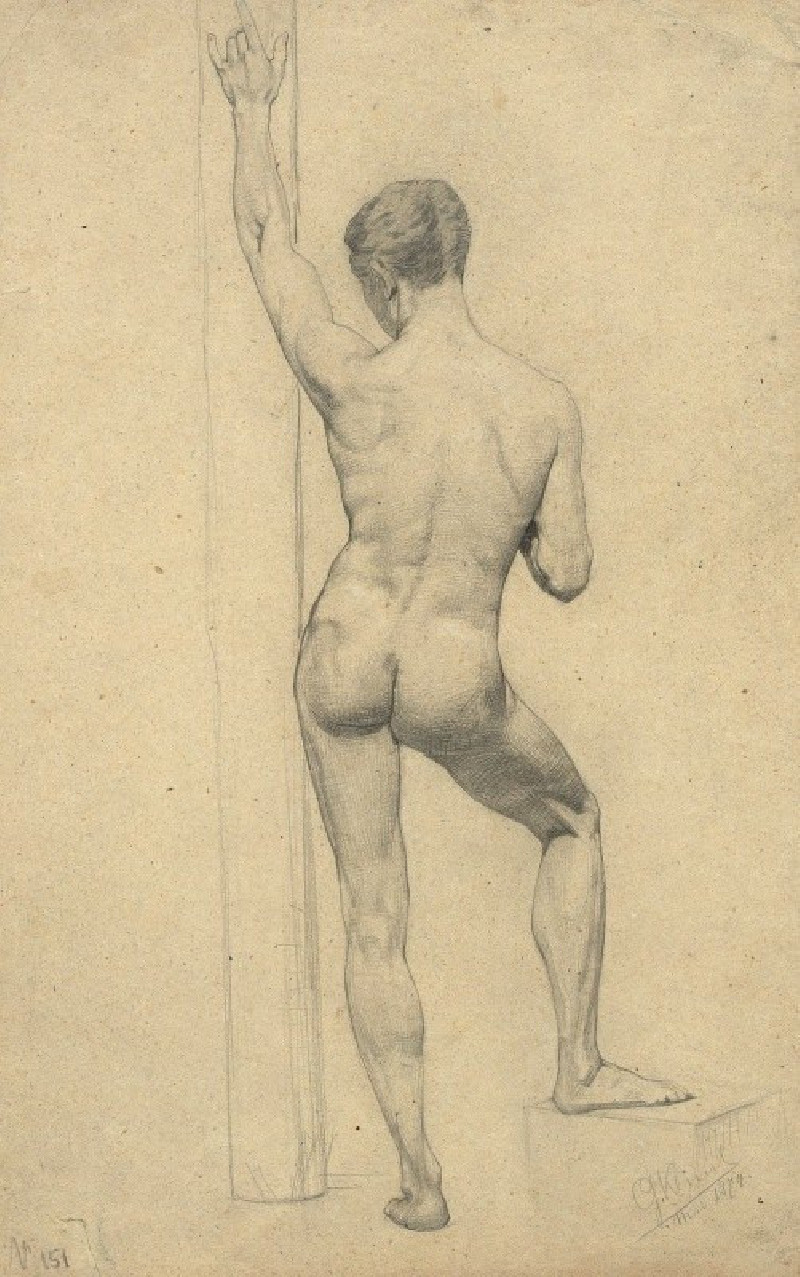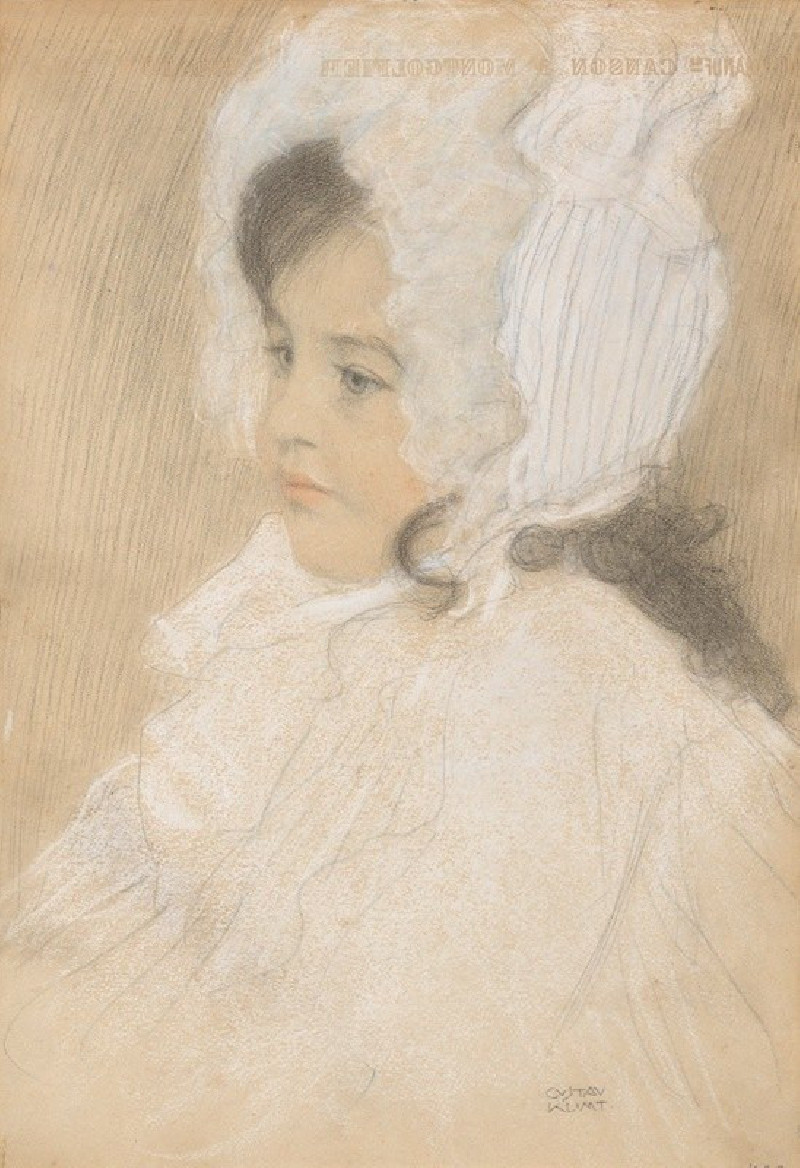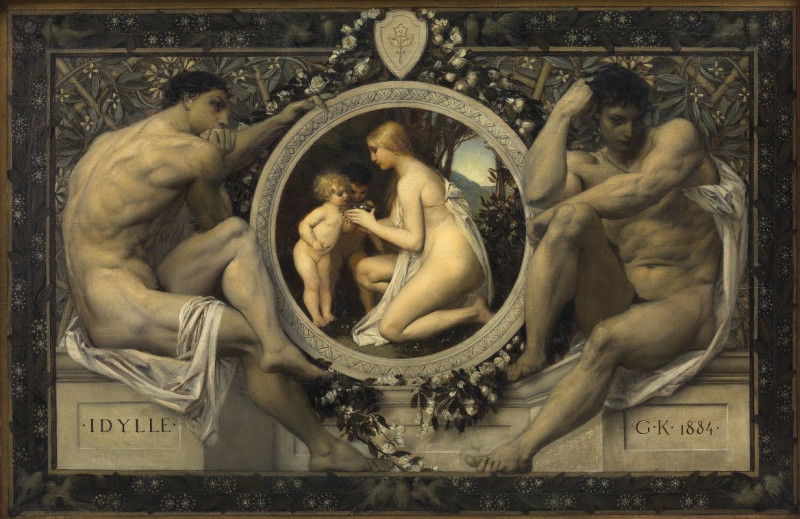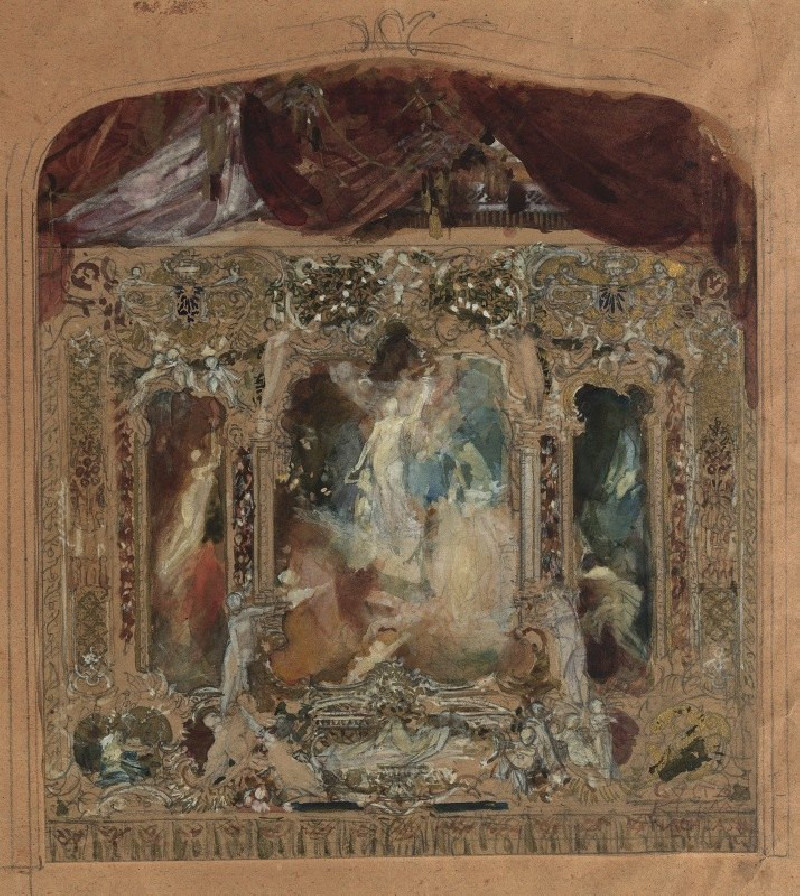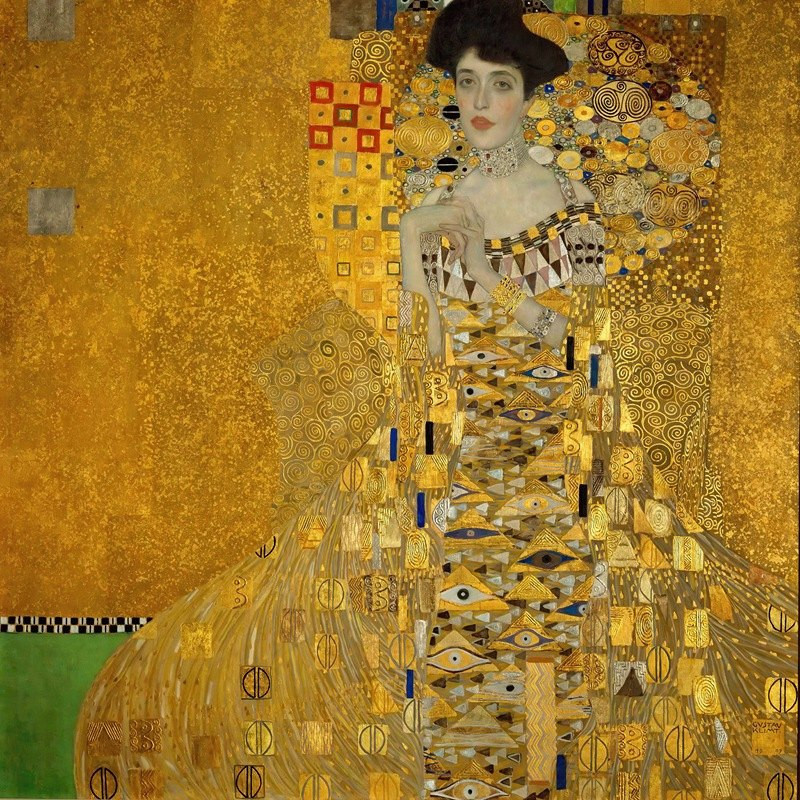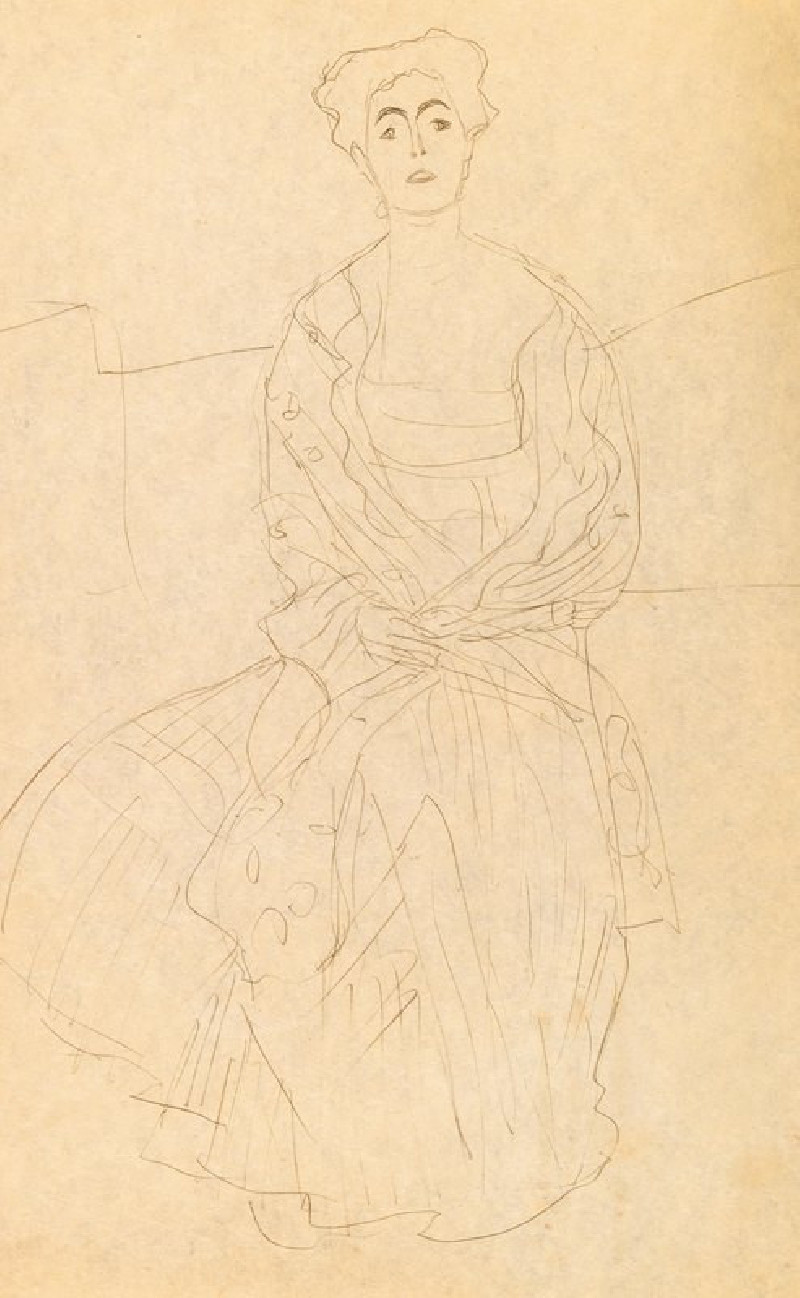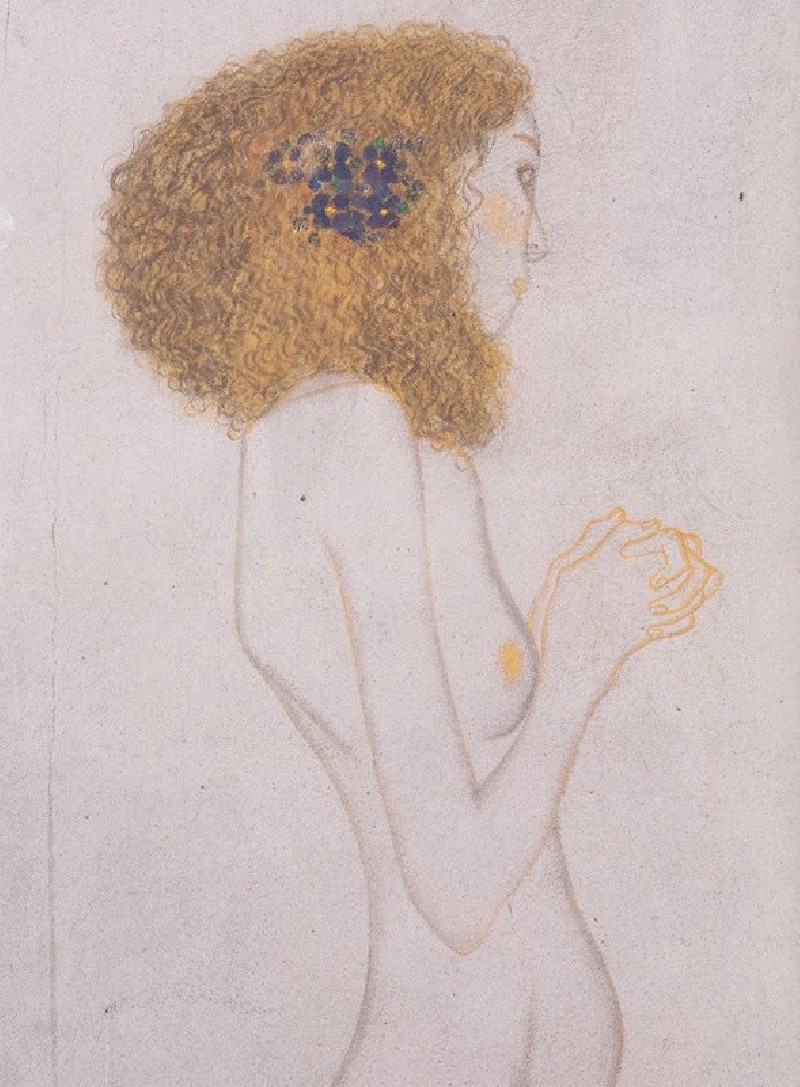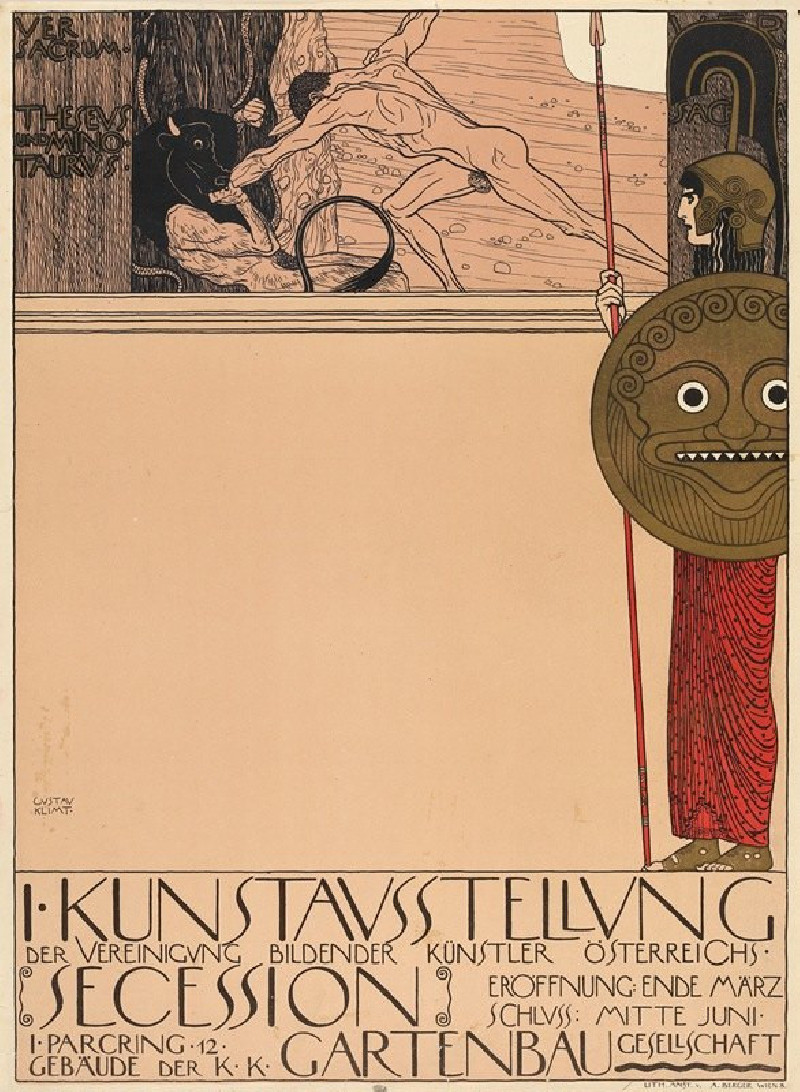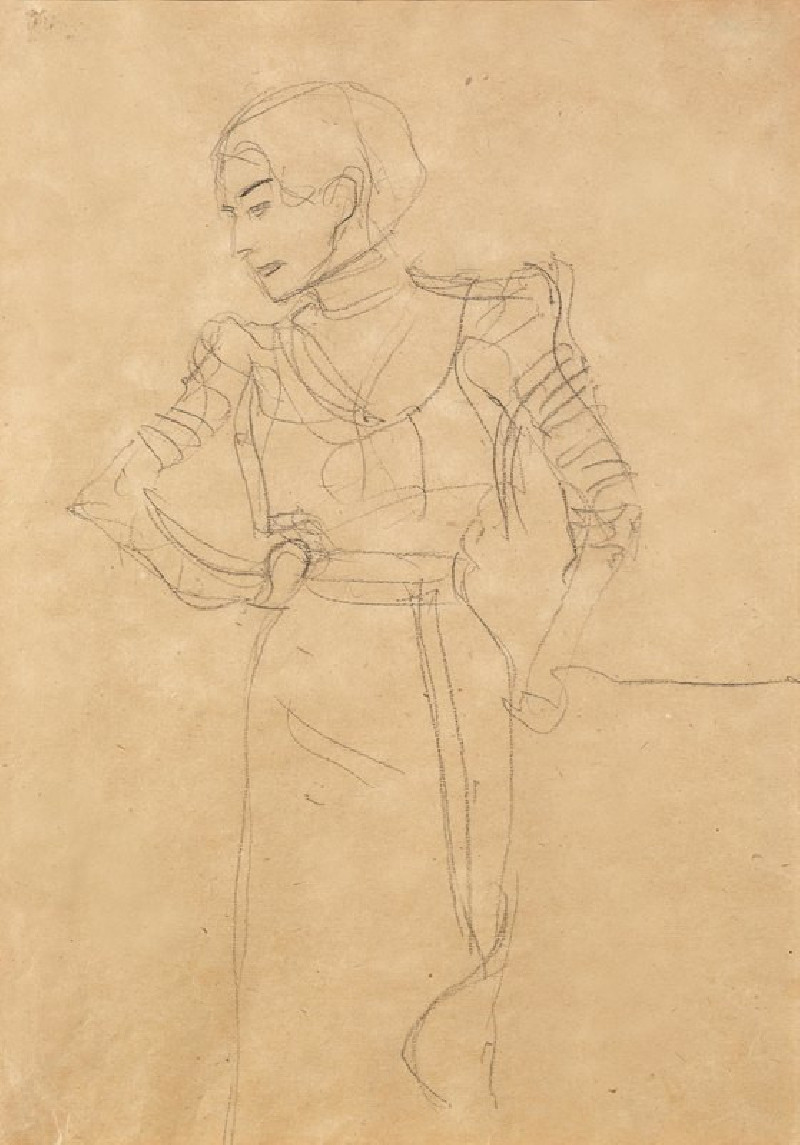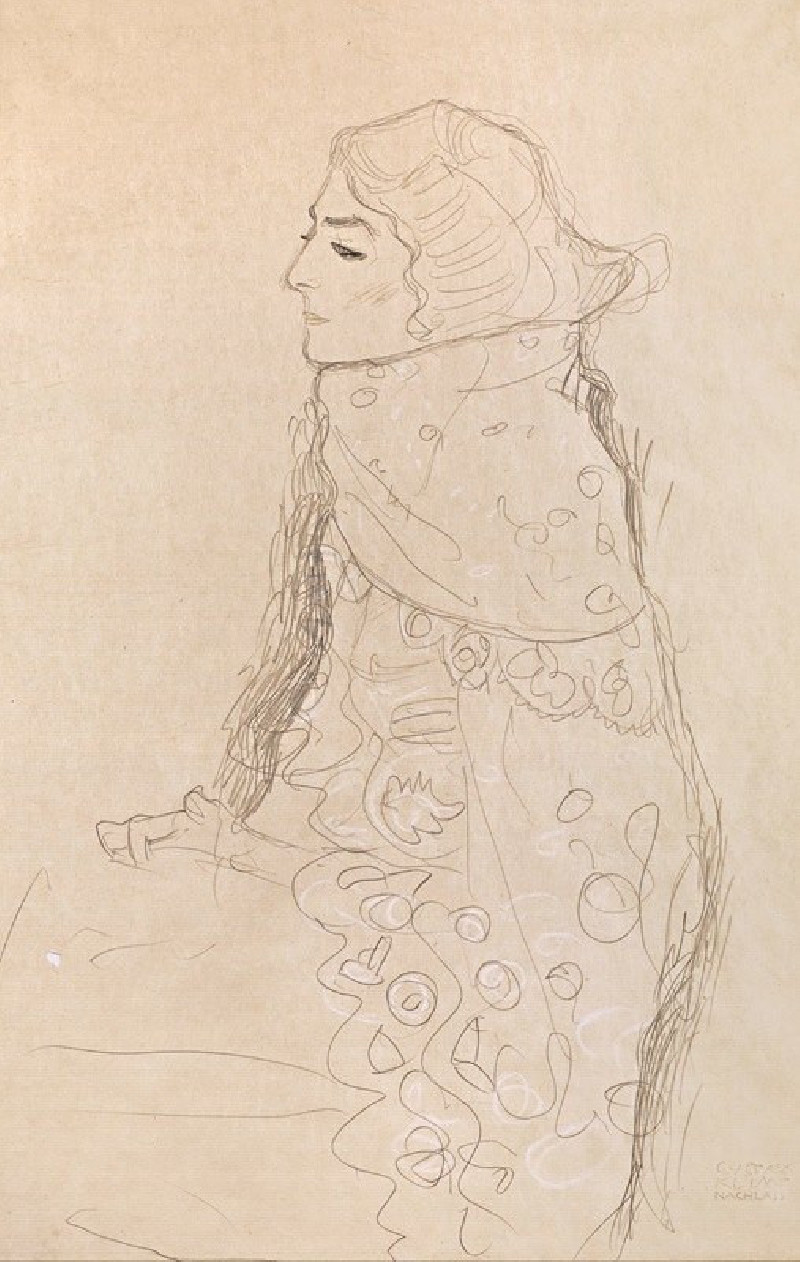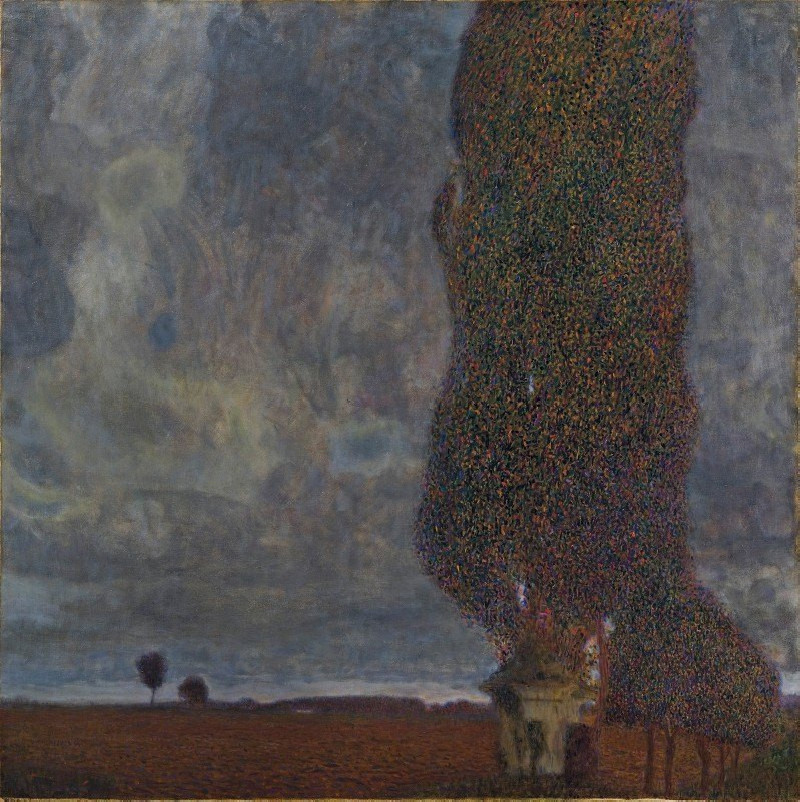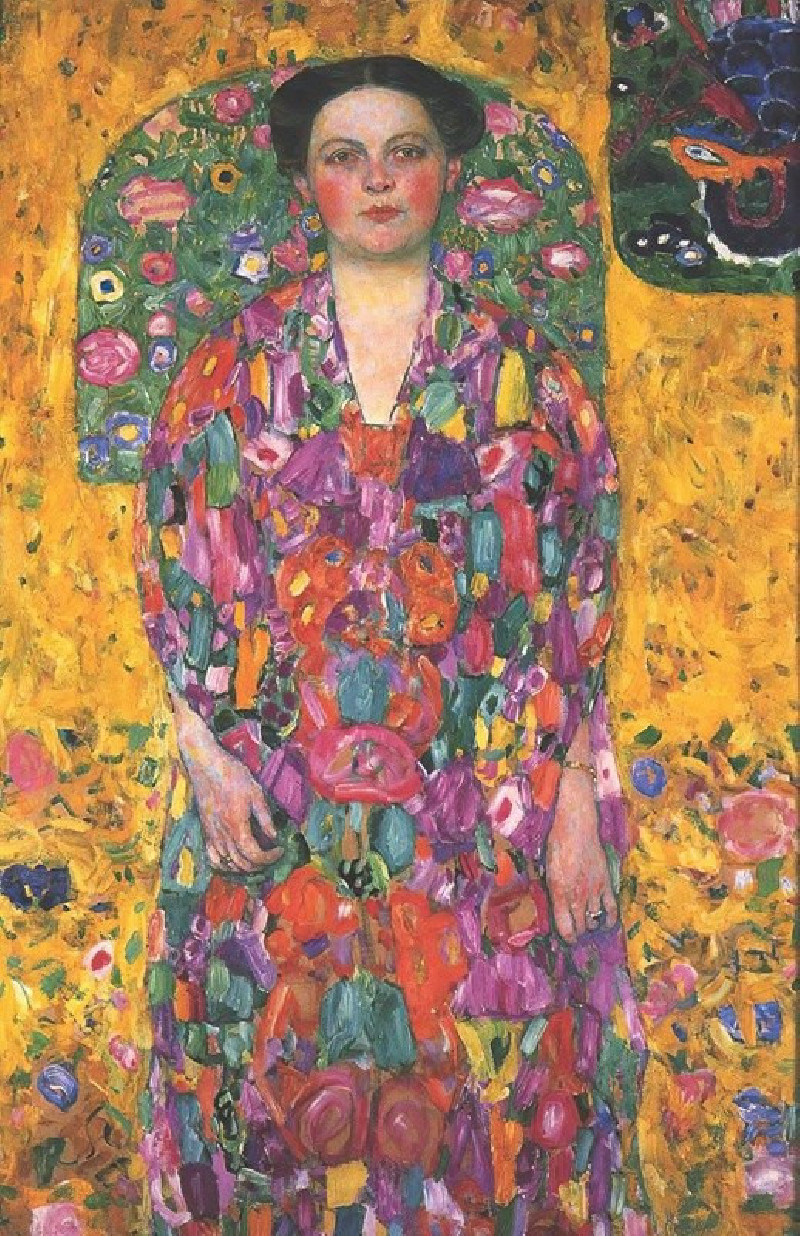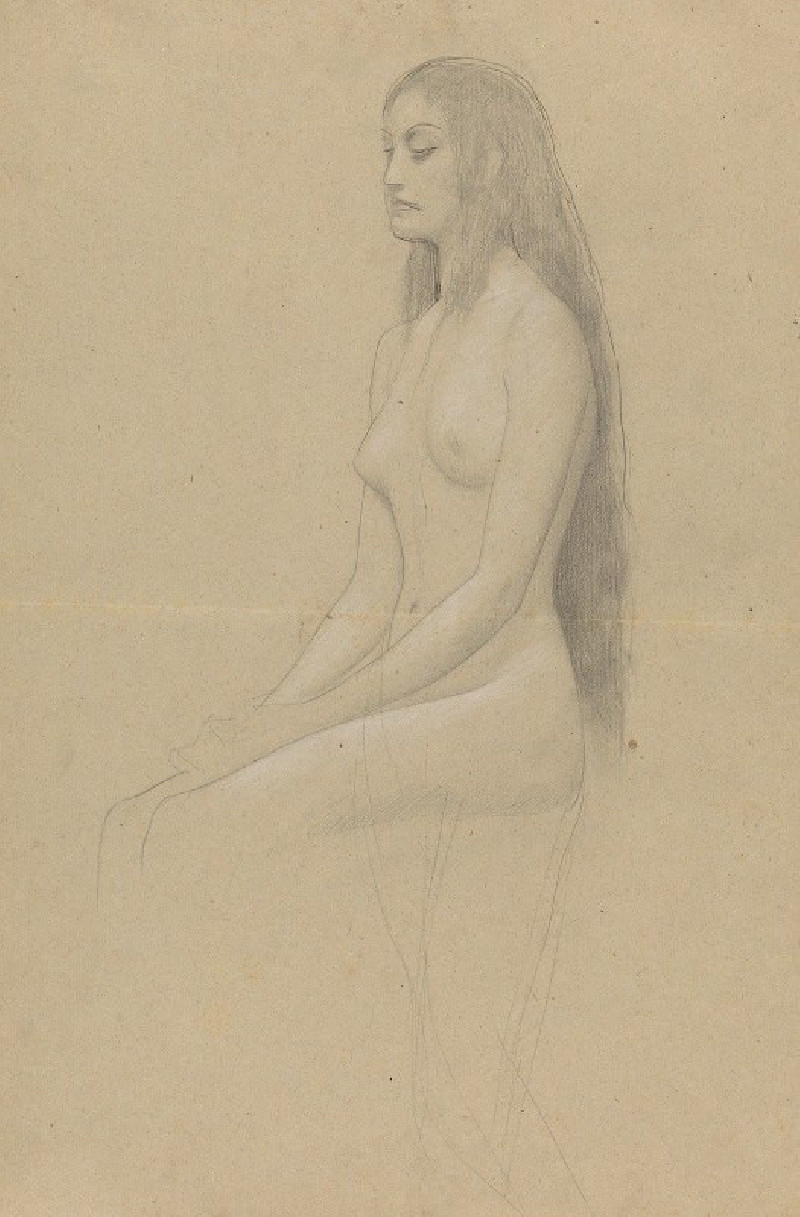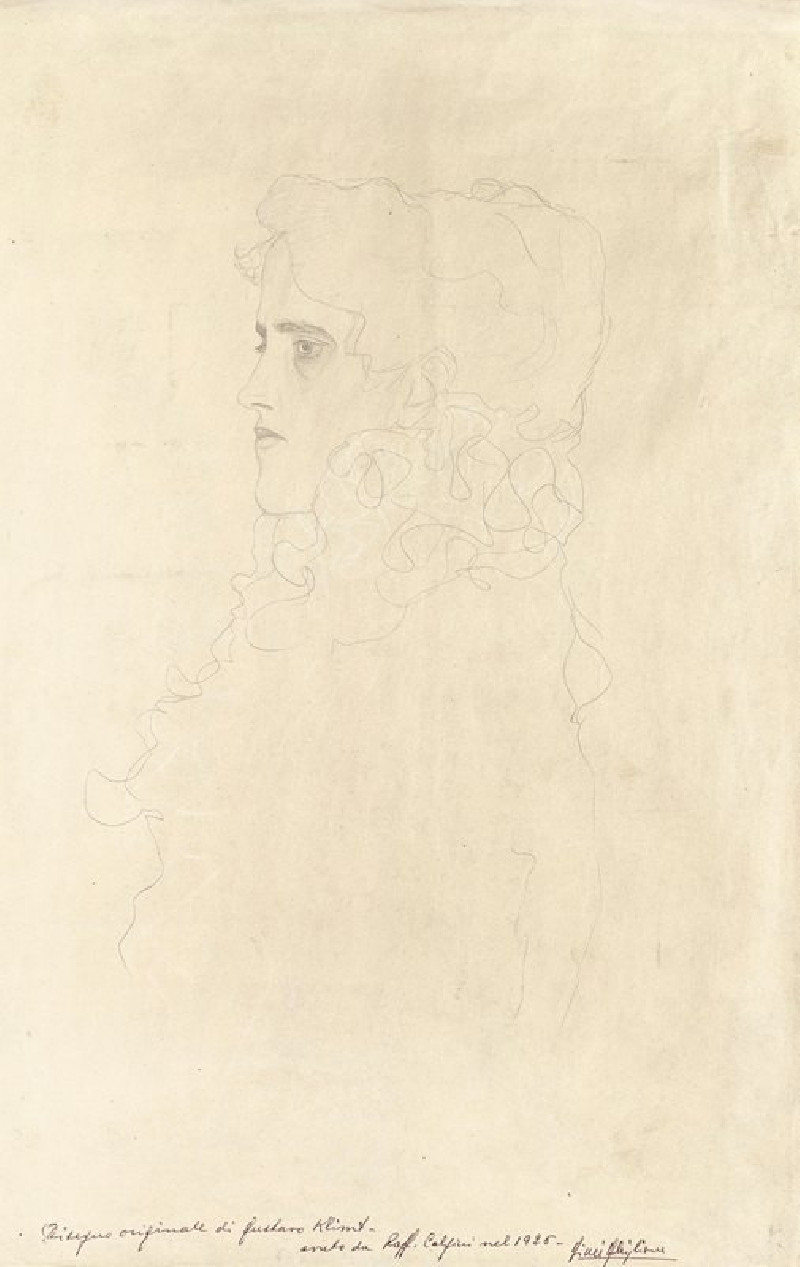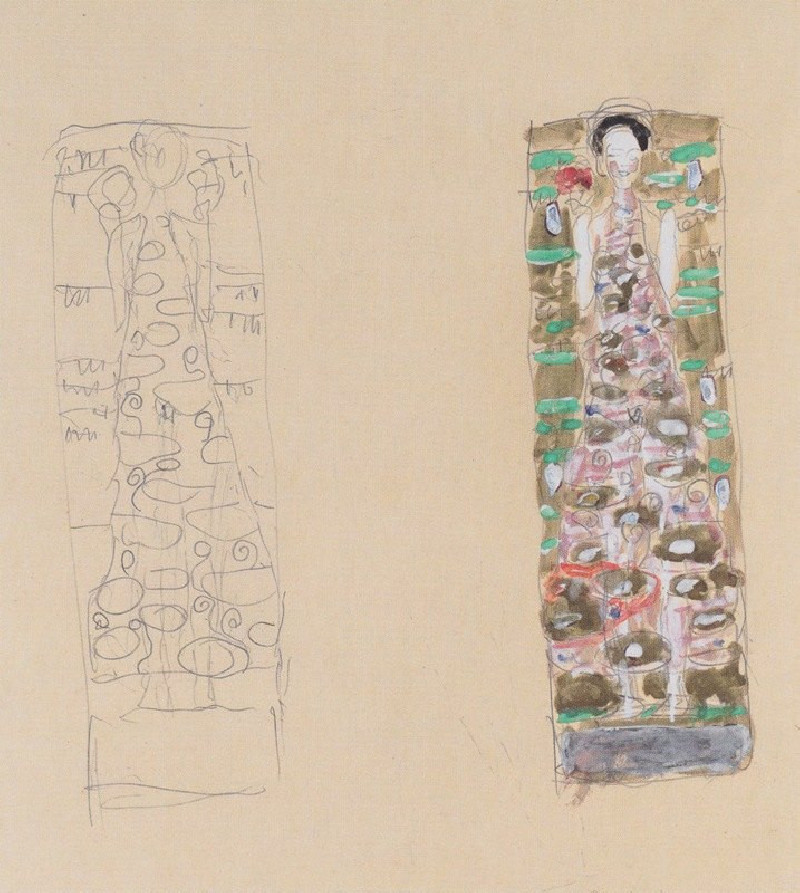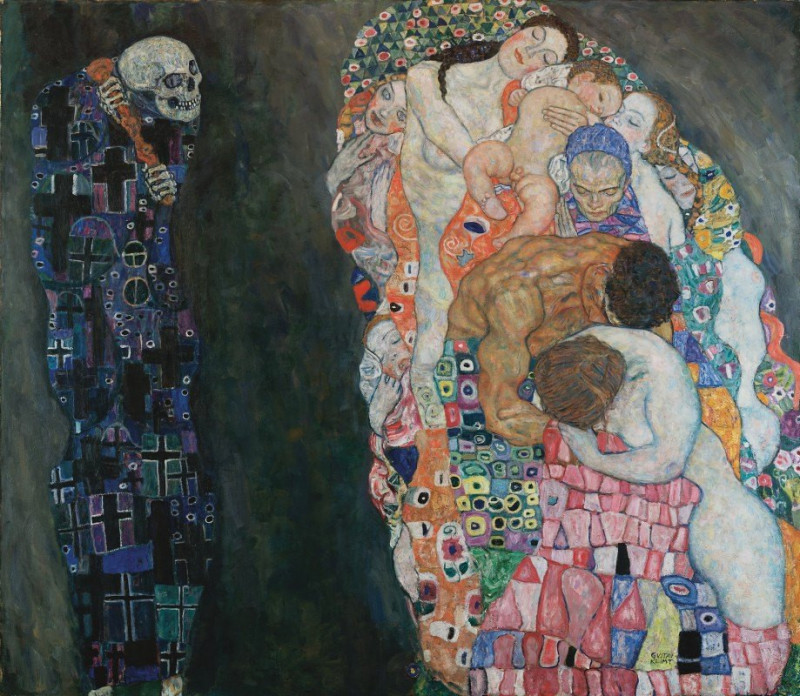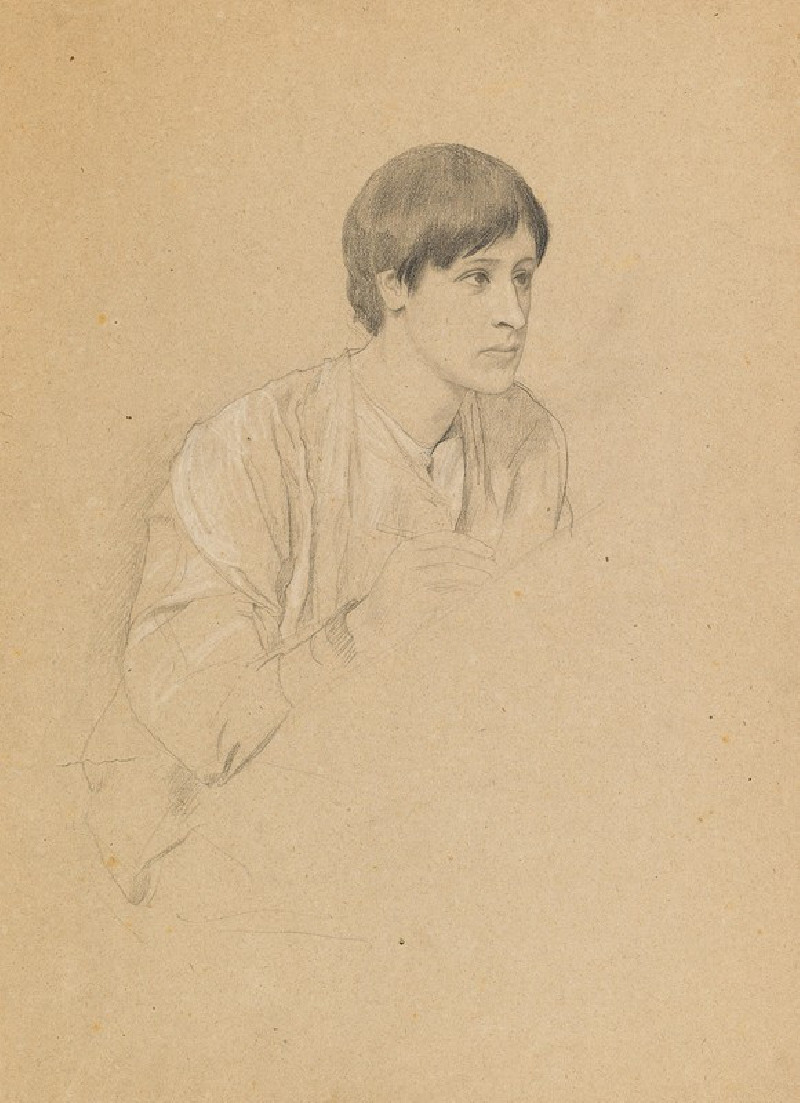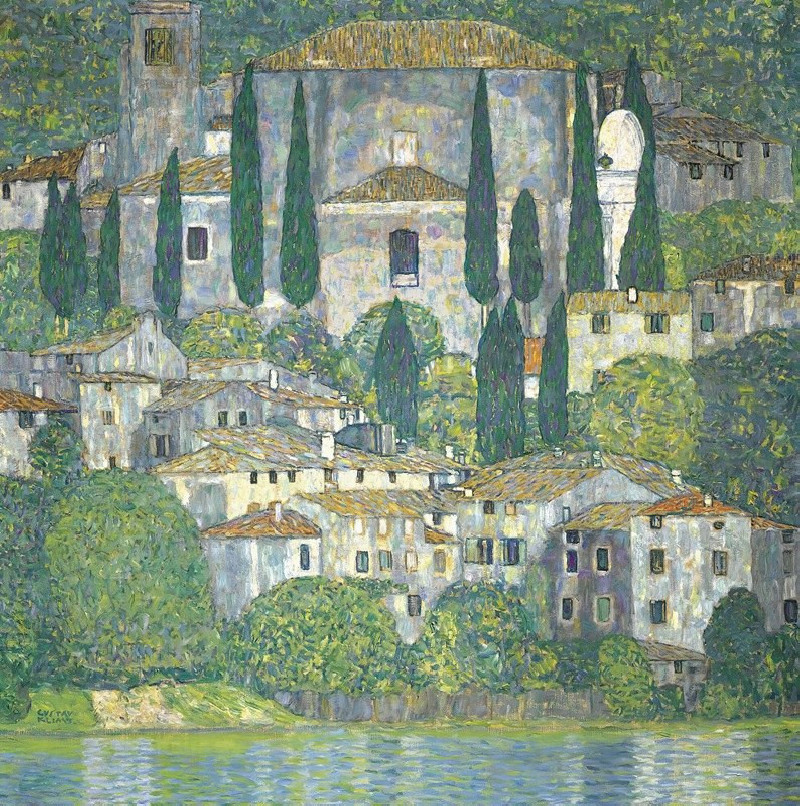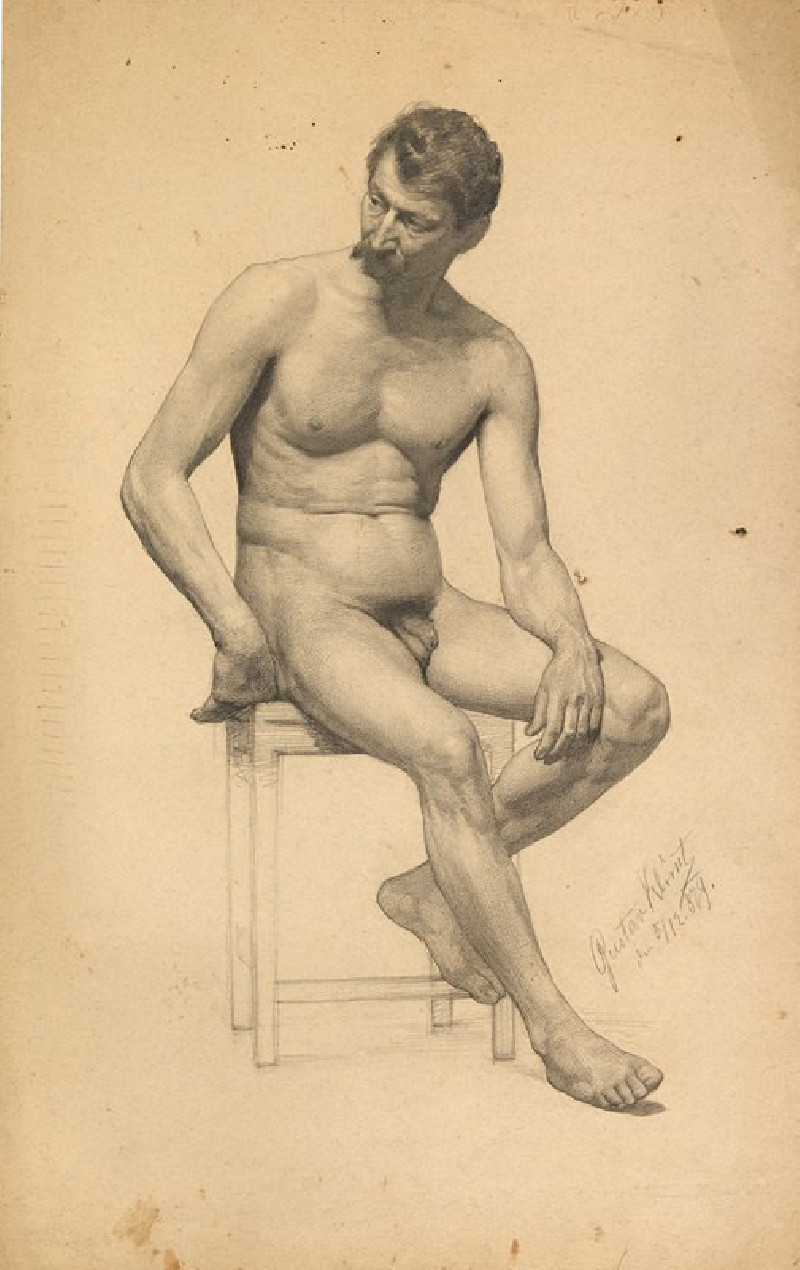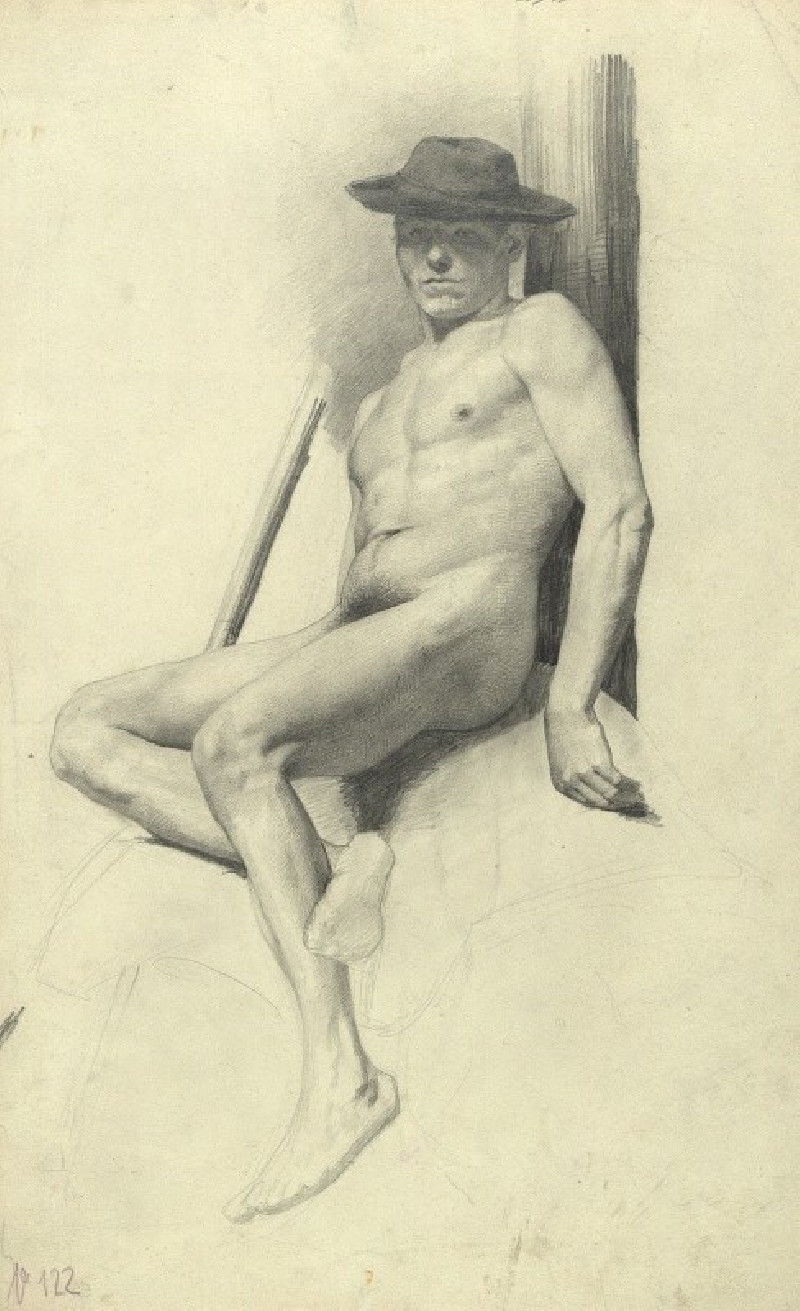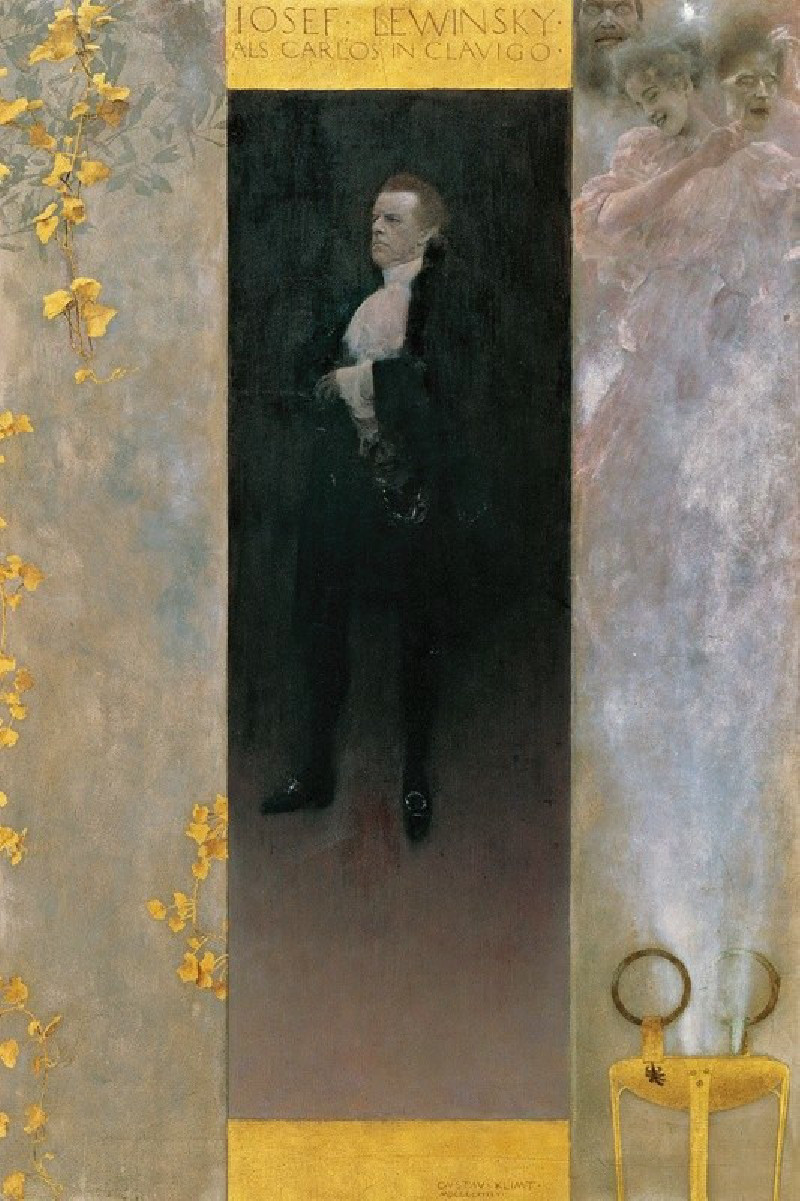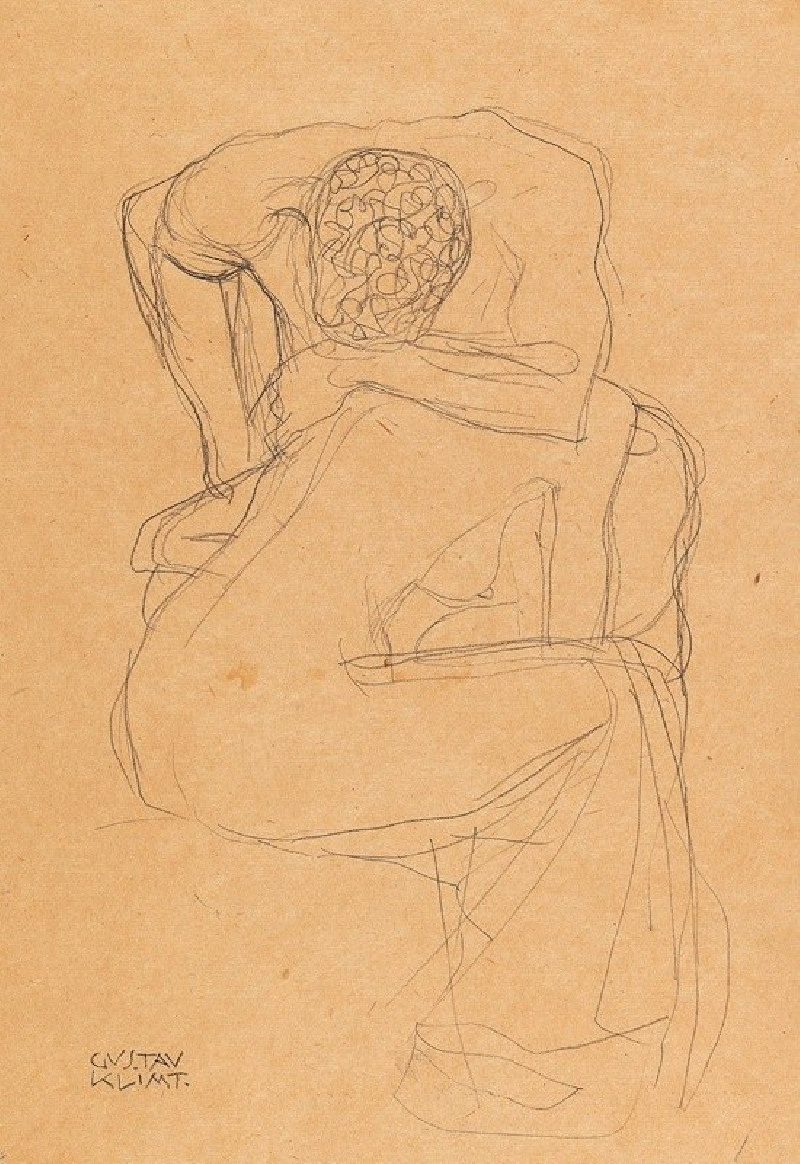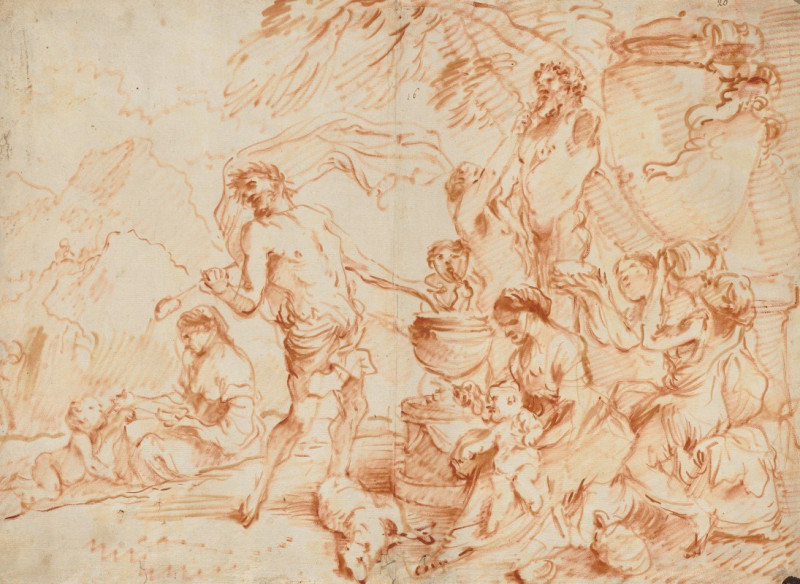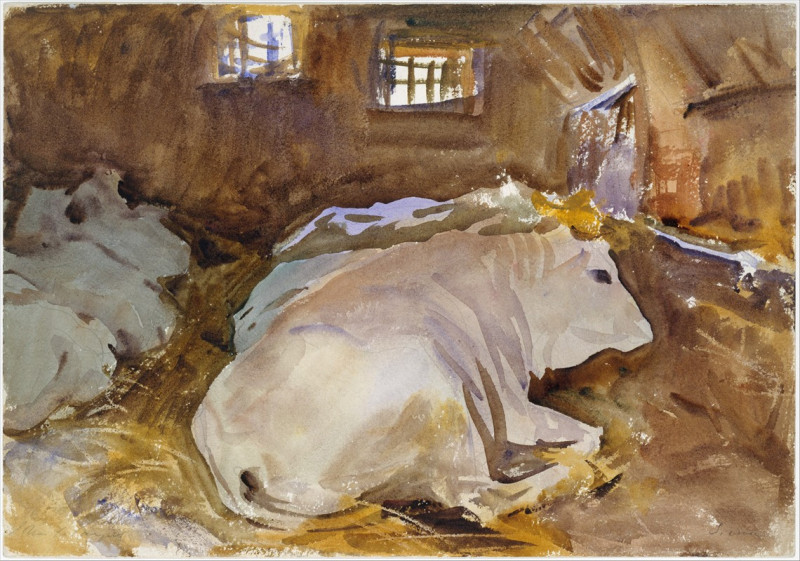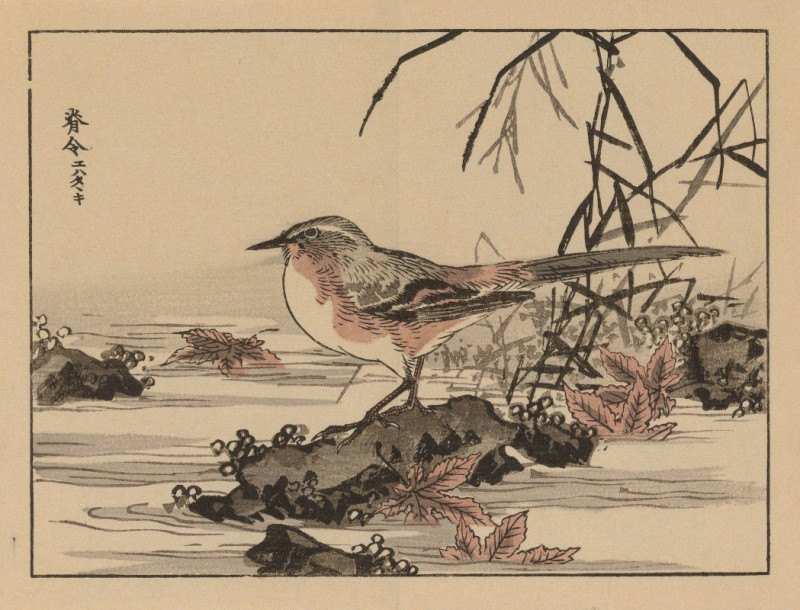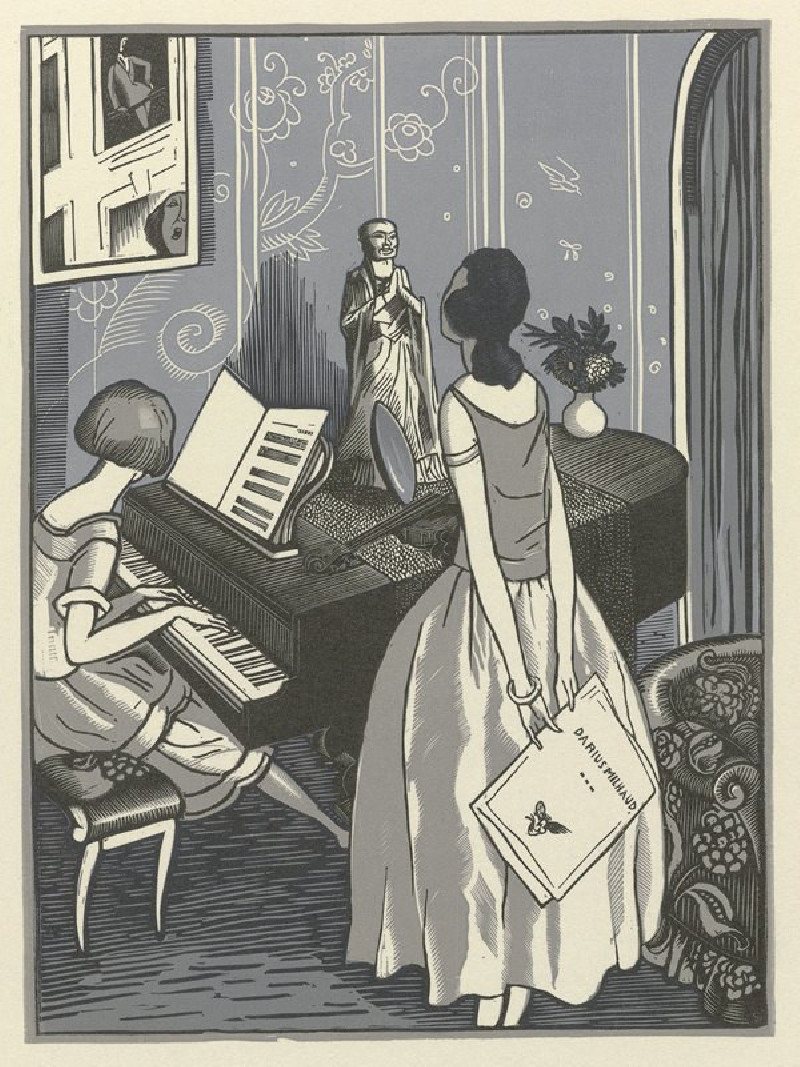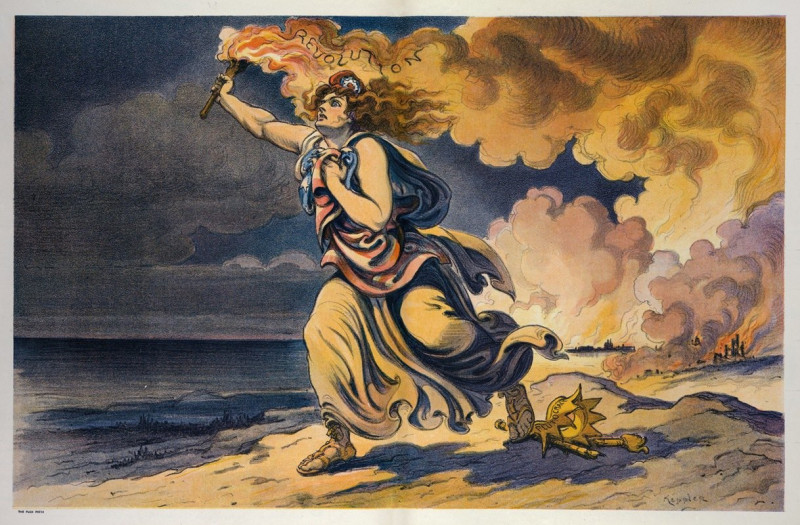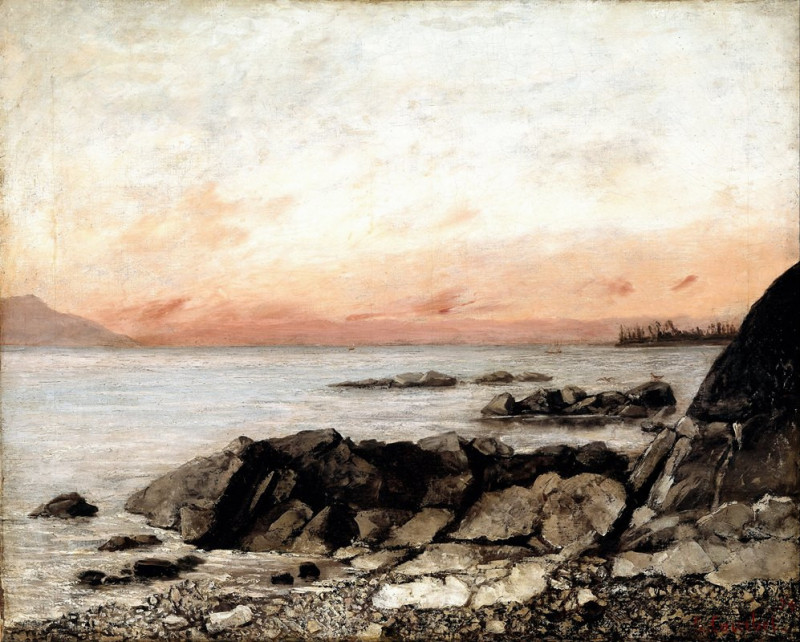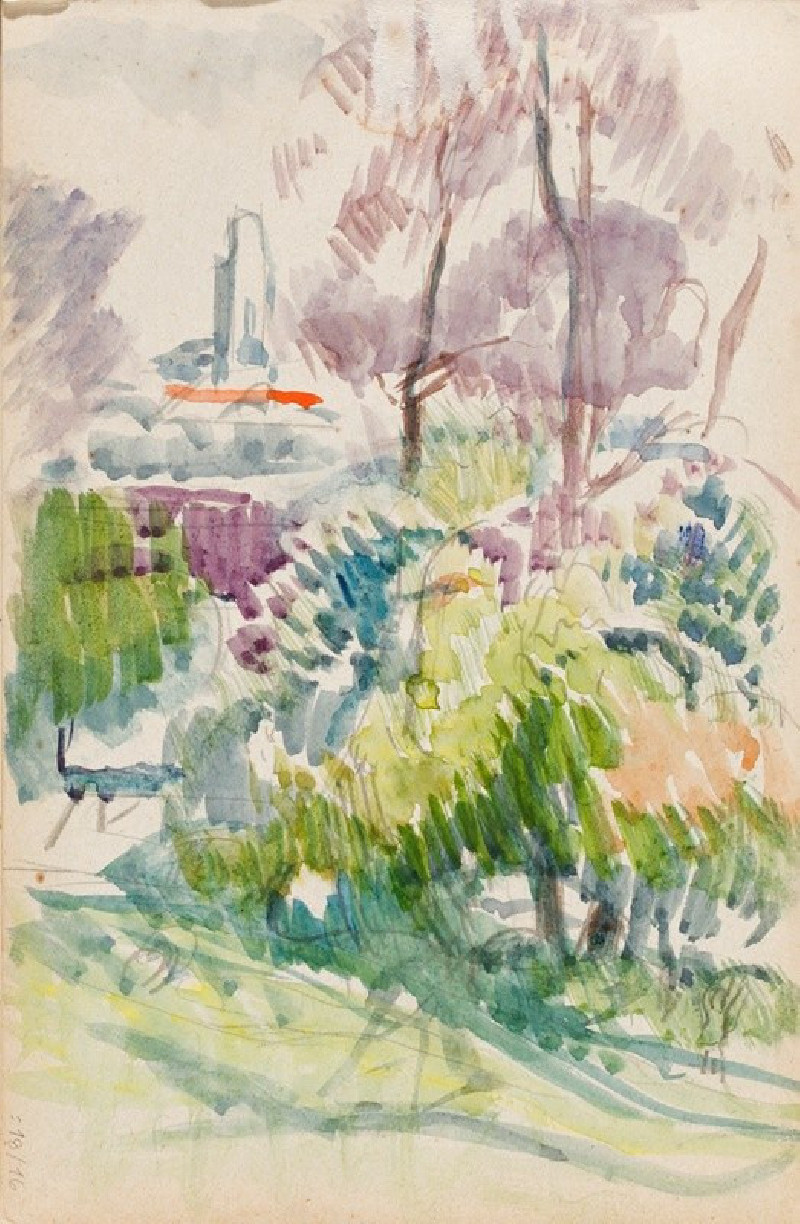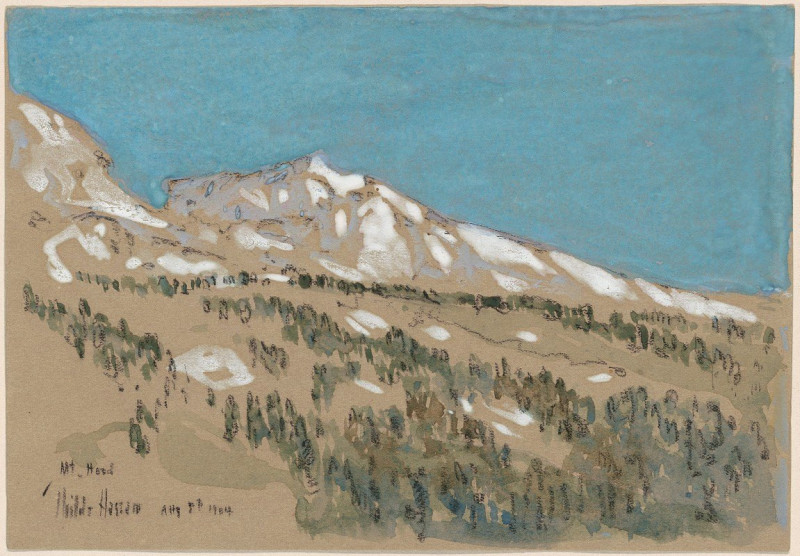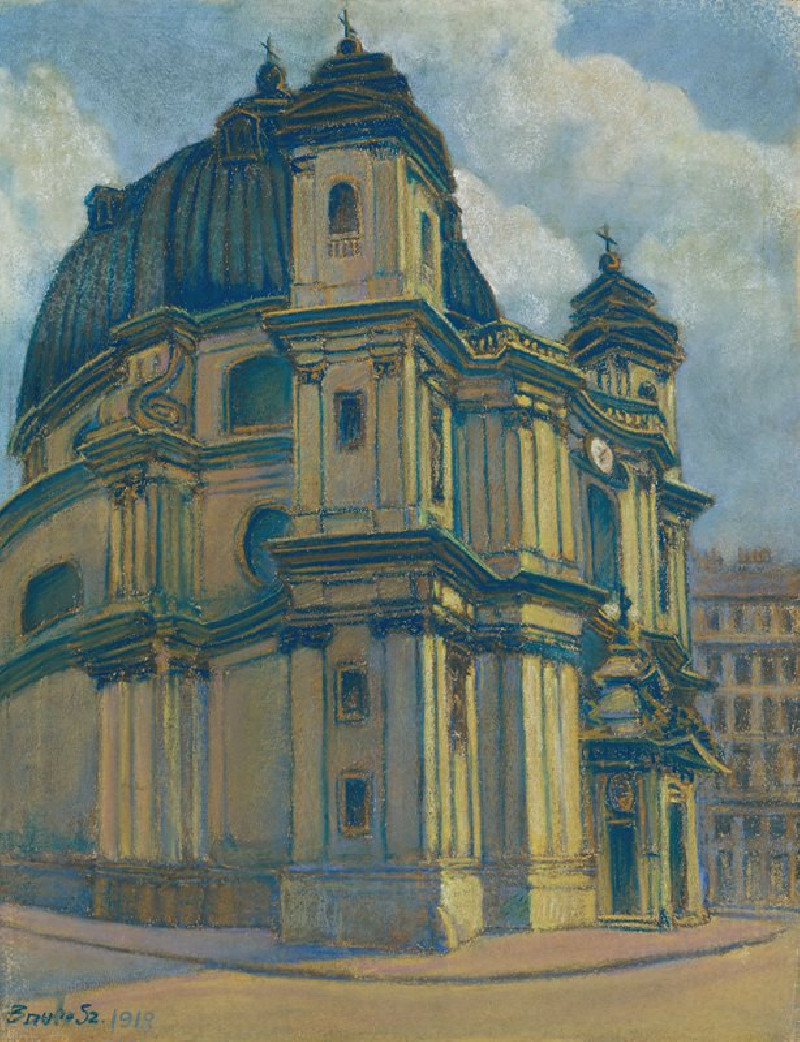Bildnis einer unbekannten Frau (Frau Heymann) (1884–1904)
Technique: Giclée quality print
Recommended by our customers
More about this artwork
Title of the Exhibit: "Bildnis einer unbekannten Frau (Frau Heymann)"Crafted between 1884 and 1904 by the illustrious Austrian painter Gustav Klimt, "Bildnis einer unbekannten Frau (Frau Heymann)" is a compelling portrait that captures the essence of its subject with profound intimacy and characteristic finesse. Klimt, known for his pivotal role in the modern art movement and founding the Vienna Secession, uses delicate yet precise brushwork to portray the dignified aura of a woman whose identity remains shrouded in mystery.The painting depicts a woman set against a rich, dark background, adorned with subtle floral patterns that suggest an air of elegance and grace. Her attire, composed of a dark dress with a finely detailed neckline and a choker of pearls, reflects the fashion sensibilities of the late 19th century, indicative of her social status and the period's style. The woman's expression, capturing a mix of solemnity and directness, draws viewers into a silent dialogue, inviting them to ponder her thoughts and identity.Klimt's skill in rendering the textures of fabric and jewelry, alongside the soft rendering of the woman's facial features, showcases his transition from a classical to a more symbolic approach that would later define his golden phase. The portrait thus not only provides a glimpse into the artist's developmental years but also emulates the depth of human character and emotion, making it a standout piece in the oeuvre of Klimt's early portraits.
Delivery
Returns
Gustav Klimt (1862–1918) was one of the greatest Austrian symbolist painters of the Art Nouveau era. Renowned as one of the most prominent founding members, and as a president of the Vienna Art Nouveau movement (Vienna Secession). His works were mainly paintings, murals, and sketches. Marked by his numerous erotic drawings, Klimt's primary subject were female figures, and at one point his work was even criticized as pornographic. Klimt found financial success in his "Golden Phase" with decorative techniques and the prominent use of gold leaf in his paintings.

